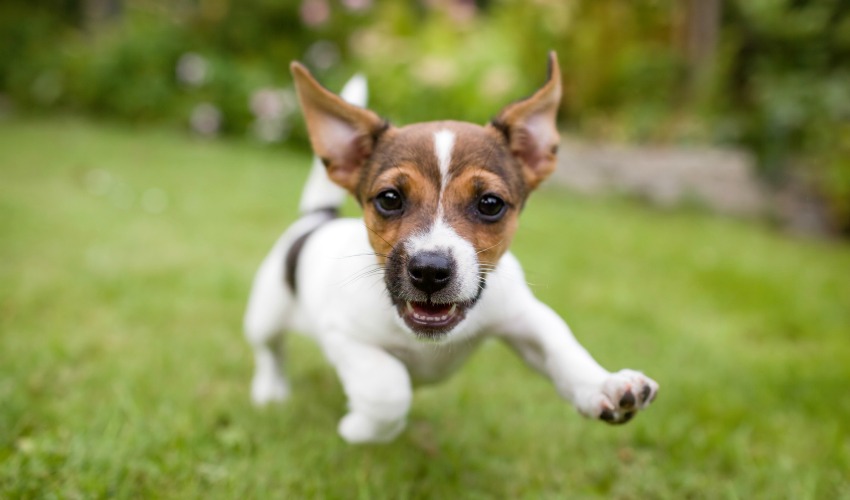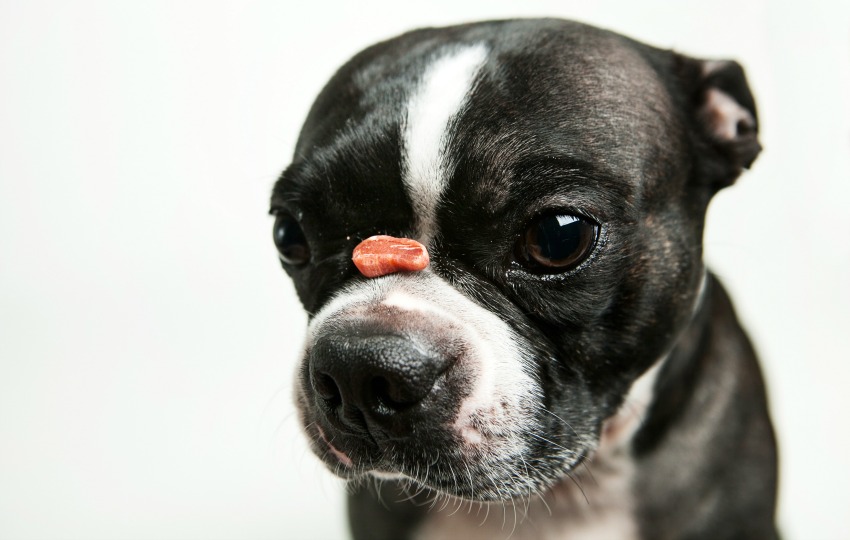As a dog groomer, you’ll meet your fair share of new clients – both human and canine! It’s important to remember that grooming can be a challenging experience for any pup, and especially for those who aren’t fully trained. The entire grooming atmosphere is a world of sights, sounds, and smells he hasn’t seen before!
So when you’re getting to know furry friends who aren’t yet fully trained, be sure to keep these tips in mind. Making every dog feel comfortable and relaxed will let you give him your best groom!
Know the Signs
Before you start grooming any dog, you need a basic background in dog behavior. Some “untrained” actions might actually be signs that the dog is scared. Speak with the owner before the appointment to get a feel for how her dog usually acts – it will help you get to know what is normal and what is not!
Since every dog is different, there are going to be certain areas that some dogs excel at, and others where they need encouragement. If you notice anything out of the ordinary, it’s worth it to double check with the owner. Otherwise, you’ll need to be patient while dogs learn – especially with younger pups!
Learning about dog temperaments and behaviors gives you a sense of how a dog might act if he feels threatened or anxious. Behaviors can differ depending on breed tendencies and personality, but knowing what to look for will start you off on the right foot!

Be Confident
Staying confident in your skills when you encounter a difficult appointment will help you make it through. Don’t throw in the towel right away – stay calm and strategize how you can groom the dog while keeping both of you safe. You studied this in your dog grooming course; now it’s time to put it to the test!
Keep in mind that when a dog enters your salon and is away from his owner, he might be prone to acting up. He could feel anxious and or scared, and that can affect the way he acts. As long as you stay relaxed, you can stay in control of the groom. Use a low, soothing voice and move slowly. Ease the dog into any movement or touch.
If he’s really acting up after you’ve spent a fair amount of time with him, it might be best to put the groom on hold. Experienced groomers can work through a difficult groom, but it’s often difficult and stressful. When you’re fresh out of your grooming course, you may feel more comfortable ending the groom early. You don’t want to end up in a sticky situation!
Use Positive Conditioning
When you’re working with a difficult dog, the best approach is the reward/ignore strategy. This means you’ll reward a dog’s good behavior, and simply ignore the bad. If a dog is listening and sitting calmly for you to groom him, be sure to praise him by giving him treats and patting him gently. He’ll be inclined to behave well since he knows he’ll get something good in return!
If your furry friend starts acting up, try to ignore the bad behaviors (when you can!). It can help condition him by taking away the attention he gets when he is good. This can be a tricky technique, because some dogs will not tune into the “ignore” aspect. Try out a few different techniques and see what works with each dog.
However, if the dog begins to get aggressive, you’ll need to change your approach. Stop the groom to keep yourself safe!

Stay Safe
You should never ever groom a dog that you perceive to be aggressive or dangerous. As a groomer, you can expect to collect a couple of small bites or scratches over the course of your career – it’s just the nature of the job! But you should not be in danger when you are at work. Remember this!
If you believe a dog’s actions are becoming aggressive, speak to the owner and express your concerns. No one can make you groom their dog – and if a client has an aggressive dog, they shouldn’t be asking in the first place! There’s never an excuse for putting yourself, your clients, your coworkers, or the dogs you groom at risk.
Watch for Reactions
When you start working with a new dog, you should always expect that he’ll be back for another appointment. There’s no reason your clients won’t love your work, after all! From day one, you should start to learn the different tendencies of each pup.
Watch how each dog reacts to you, how they react to other dogs, and what strategies work to keep them calm for a groom. Jotting down notes to keep in each client’s file will help make an easier session for both you and the dog! You’ll know ahead of time where you might run into problems during each appointment.
This will help your clients as well. You work with tons of different dogs on a daily basis. Within a year or two of starting your dog grooming career, you will have encountered pretty much every canine personality type out there! Your clients will be grateful for any tips and tricks that might help with the training process.
Don’t be shy – you’ll become a favorite of your clients (and their friends) for your expertise!
Are you ready for a career as a dog groomer? Jump in and study from home with QC’s online dog grooming course!



